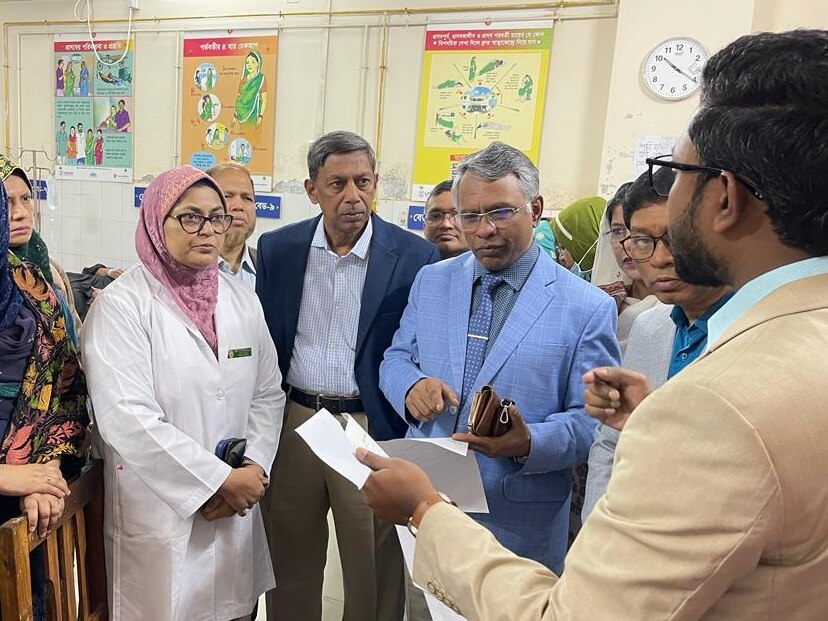Inauguration of Inpatient Management System
01 January, 2024
Background
In Bangladesh, inpatient management in most government hospitals is still conducted through paper-based
systems, with no real-time electronic recording or management. To advance healthcare, it is essential to
introduce modern technologies in patient care and management. The absence of an electronic patient record
system often forces doctors to rely on patients' verbal accounts of their illness histories. This approach
can be significantly improved with a centralized patient record system, enabling physicians to make more
informed decisions—something that is already standard practice in many developed countries.
Introducing such changes to the government healthcare system is challenging. Without background studies on
implementation challenges, effective planning and scaling become
difficult. However, in Bangladesh, there is also a lack of
research on the actual costs, planning, and resources required to implement such transformations nationwide,
particularly in a system that is inherently resilient to change.
Moreover,
Objectives
To address this gap, the Head of the Department of Obstetrics and Gynecology at Faridpur Medical College Hospital, Professor Dr. Dilruba Zeba embarked on a mission to implement a software-based inpatient management system within her department. Her objectives were
- to replace all paper-based tasks with a computer-based system in a scientific and research-oriented way,
- to introduce a platform for recording all patient data from admission to discharge,
- to enable electronic creation of prescriptions, consent forms, and pre- and postoperative orders,
- to digitally store investigation reports that are not typically included in patient files at the hospital, and
- to assign a unique ID to each patient, ensuring that their previous hospital records are easily accessible if they return.
Also, the wanted to launch the system from January 1st in 2024.
Method (Where I Enter the Scenario)
In the second week of November 2023, Professor Dr. Dilruba Zeba approached me to ask if there was any
platform that met her objectives. Later, she requested that I build a customized system so we could have the
full flexibility to modify, adapt, and improve it, thereby avoiding additional barriers that might delay its
implementation.
Building such a system within two weeks was challenging. However, as I already had a software solution with
similar capabilities, I offered to help. Using my existing scientific prescription-writing software,
SciRx,
as a foundation, I adapted it to meet the hospital's specific needs.
Some Photos from the Day

Training on the inpatient management software

Professor Dr. Dilruba Zeba, along with the Director of FMCH, senior doctors, and departmental heads, attending the inauguration of the software

Explaining sections of a printed document. From left to right: Professor Dr. Dilruba Zeba, the Director of FMCH, and the Principal of Faridpur Medical College

Rajib Biswas is demonstrating the usage of patient management software
Conclusion
The project came to an end due to some operational difficulties but we had several learnings from this implementation. Details of the learnings will be discussed further in another case study.